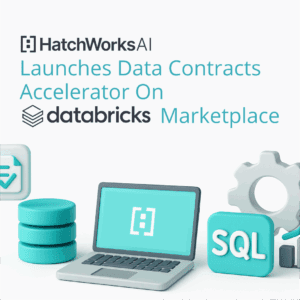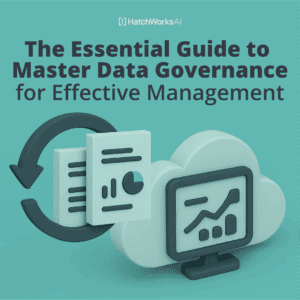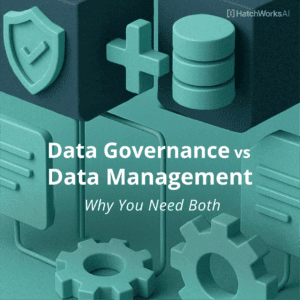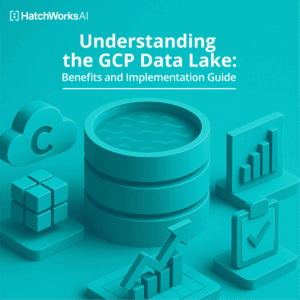In this guide, you’ll find our best practices for data governance as well as the tool we recommend you use and how we can help.
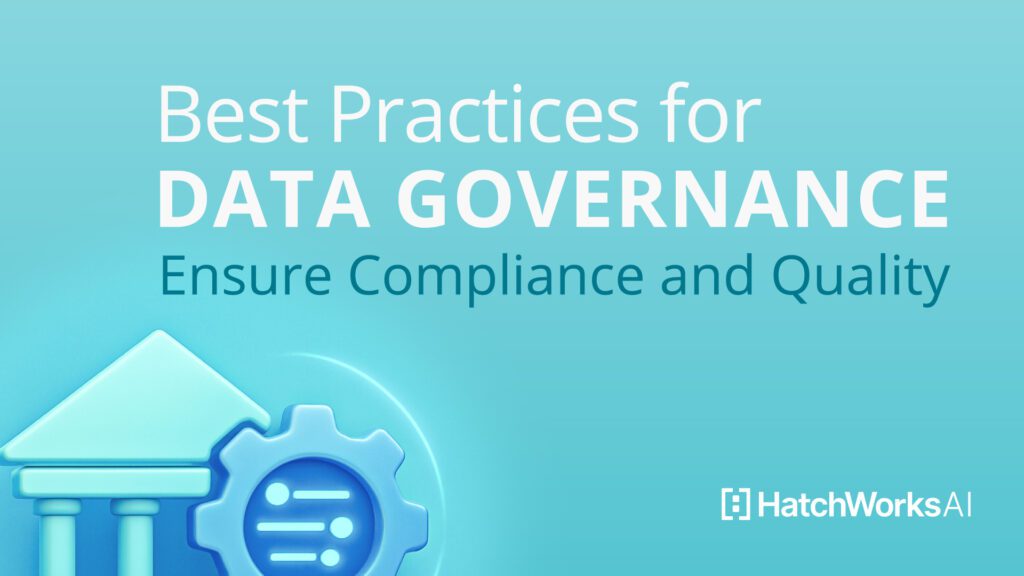
Best Practices for a Successful Data Governance Program
If you want your data governance program to translate to quality, easy to access data, you’ll need to follow these 10 best practices.
They work for us and our clients so we trust they’ll work for you too.
1. Start Small, Then Scale
If you scale data governance too quickly, you’re at risk of scaling inefficient practices. And then it’s harder to fix data problems.
So we always recommend piloting governance initiatives before scaling them organization-wide.
These pilot projects might focus on sensitive data management or cross-departmental collaboration, providing a controlled environment to refine strategies.
Why It’s the Best Practice:
Starting small reduces risk. It lets you experiment with new policies and technologies without overwhelming the organization. Pilot projects act as a proving ground, allowing you to gather feedback, measure success, and make data-driven adjustments.
When pilots succeed, they build confidence and provide a template for organization-wide rollouts.
2. Align Governance with Organizational Objectives
Before scaling, you want to hit pause and check that any data governance you roll out is aligned to organizational objectives.
This means ensuring that every aspect of your data governance strategy directly supports objectives like enhancing customer personalization, improving operational efficiency, or driving digital transformation.
Why It’s the Best Practice:
A data governance strategy that aligns with organizational objectives is inherently more relevant and impactful.
The company sees improved data-driven decision-making, a tighter integration between IT and business processes, and a culture that values data as a strategic resource.
This alignment optimizes resources and drives sustainable competitive advantage.
3. Get Executive Buy-In
Users need incentives and motivation to follow your new data governance initiatives, and you need top-down buy-in from executives to create company-wide adoption.
You’ll want to engage executives early in the process and demonstrate the strategic benefits of data governance. Hint, hint—you can refer back to how you’ve aligned data governance with organizational goals to really sell it.
Why It’s the Best Practice:
With executive support, initiatives are more likely to receive the necessary resources and attention.
Employees at all levels are motivated to follow data governance policies, leading to improved compliance, better data quality, and a stronger overall security posture.
Ultimately, this creates a more agile and informed organization.
4. Establish a Data Governance Framework
Effective data governance requires a data governance framework.
There are three pillars to focus on:
- Data quality
- Data security
- Data compliance
Each one reduces risk and enhances trust because every facet of data management is covered.
Why It’s the Best Practice:
Organizations that adopt a robust framework experience streamlined data management, where every stakeholder understands their roles and responsibilities.
This leads to enhanced data security, fewer compliance issues, and a foundation that supports both current operations and future innovations.
🛡️ For a deeper understanding of the foundational pillars that support robust data governance, explore our insights on Practical Data Governance Pillars: Safeguarding Your Digital Assets.
5. Adopt a “Data Product” Mindset
Shift your perspective from treating data as a byproduct of operations to viewing it as a valuable product that can generate insights and drive business value.
This requires identifying each data domain as a data product and appointing domain data owners to govern the data they create.
Why It’s the Best Practice:
Adopting a data product mindset encourages innovation. It pushes organizations to extract maximum value from their data, fostering a culture of data literacy and accountability.
By treating data domains as individual products, organizations can focus on continuous improvement and tailored governance.
6. Integrate Data Governance with IT Policy
You need to view data governance as an integral part of your overall IT governance strategy so that both initiatives work in concert with one another.
Why? Because integration avoids silos. When data governance is aligned with IT policies, it guarantees consistency in security practices, compliance measures, and data management protocols.
Why It’s the Best Practice:
Organizations achieve a cohesive framework where data governance supports and enhances IT operations. This leads to reduced redundancies, better risk management, and a more agile IT environment that can quickly adapt to new regulatory requirements and technological advances.
7. Prioritize Data Quality Assurance
Prioritizing quality assurance ensures that the data used across the organization is accurate, consistent, and reliable, which is critical for both compliance and operational efficiency.
Be sure to leverage tools that automate quality checks, such as profiling and deduplication.
Why It’s the Best Practice:
With robust quality assurance practices, organizations see fewer errors, reduced operational risks, and enhanced trust in the data. And then you get more accurate reporting, improved customer experiences, and ultimately, better business outcomes.
🔍 Implementing Master Data Management (MDM) can significantly enhance data quality. Our guide, Unlock Self-Serve Analytics with Data Governance MDM: Our How-To Guide, provides a step-by-step approach to unifying data and boosting analytics.
8. Implement Data Access Controls
Effective access control policies balance security with functionality.
By defining who can access what data, organizations minimize the risk of data breaches and misuse, while still empowering teams to work efficiently.
Why It’s the Best Practice:
Strong access controls lead to a more secure data environment. Sensitive data is protected against unauthorized access, reducing the likelihood of data breaches. At the same time, business teams enjoy streamlined access to the data they need, resulting in smoother operations and better overall productivity.
9. Leverage Automation and AI in Governance
Automation and AI can enforce policies and enable real-time monitoring, making your governance processes more efficient
Why It’s the Best Practice:
By leveraging these technologies, organizations benefit from faster policy enforcement and more effective compliance monitoring.
Automation reduces operational costs and frees up human resources for strategic tasks, while AI helps uncover insights that drive continuous improvement in data governance practices.
🤖 Utilizing platforms like Databricks can streamline data governance through automation. Discover how our Data Engineering & Analytics services leverage Databricks to enhance data management and analytics capabilities.
10. Conduct Regular Audits and Performance Reviews
You want to set benchmarks for success and periodically assess the program’s effectiveness. Otherwise, how will you know your data governance is working?
Then, when you get the results from these audits and reviews, you can adjust policies and frameworks to course-correct your governance strategy.
Why It’s the Best Practice:
Regular reviews ensure that your governance program remains dynamic and responsive. Audits help identify gaps, inefficiencies, and emerging risks, enabling continuous improvement and adaptation to new challenges.
Data Governance Technology and Tools
In this section, we explore how selecting the right software can empower your organization to manage data more effectively and securely.
Data Governance Software and Vendors–Investing in the Right Technology
Organizations that invest in robust data governance software experience more efficient data management and a smoother integration of governance practices into daily operations.
The tool you deploy should align with data governance best practices by offering functionalities such as data cataloging, quality monitoring, compliance tracking, and policy enforcement. It must support your current data needs and have the flexibility to scale as your data volume and complexity grow.
We highly recommend Databricks for its unified analytics platform that not only streamlines data processing but also incorporates robust governance features such as the Unity Catalog.
This solution simplifies the management of data pipelines, ensures data quality, and enhances compliance, making it an excellent choice for organizations looking to integrate advanced analytics with strong governance controls.
Learn more about why we back Databricks in our article: Why We Partnered with Databricks to Help Businesses Succeed with AI
Ready for Data Governance that Ensures Compliance and Quality?
At HatchWorks AI we’re here to help you make your data your biggest differentiator while leveraging AI.
Get in touch with our team to learn how we can help you implement scalable and effective data governance practices tailored to your business.
FAQs about Data Governance Best Practices
Below, we’re covering some common contextual questions in case there’s anything you don’t already know but need to when implementing data governance.
What is data governance?
Data governance is a system for defining who within an organization has authority and control over data assets and how those assets may be used. It encompasses the people, processes, and technologies required to manage and protect data. Good data governance ensures data integrity, consistency, and security while enabling organizations to manage risk, maximize value, and reduce costs.
It’s critical for organizations because it enhances data quality, ensures compliance with regulations, and facilitates secure data usage.
Want to learn more? Check out our article: The Core Components of Data Governance—Are Yours in Order?
What are the goals of data governance?
The goal is to establish the methods, set of responsibilities, and processes to standardize, integrate, protect, and store corporate data.
And ultimately, it needs to establish a data governance program that spans the strategic, tactical, and operational levels in enterprises.
How do organizations benefit from a well-implemented data governance framework?
A strong data governance framework enhances data quality and security, ensures regulatory compliance, and supports informed decision-making.
It provides reliable data that minimizes operational risks, drives cost efficiencies, and improves overall business performance by streamlining processes across the enterprise.
Data governance vs. data management
While data governance focuses on the roles, responsibilities, and processes for ensuring accountability and oversight of data assets, data management is a broader discipline. Data management includes planning, creating, acquiring, maintaining, using, archiving, retrieving, controlling, and purging data. In essence, data governance is the control framework that guides effective data management.
What are data governance roles and responsibilities?
Successful data governance relies on a collaborative framework involving several data governance roles:| Role | Description |
|---|---|
|
Steering Committee:
|
Typically composed of senior management or C-level executives, this committee sets the overall governance strategy, champions the initiatives, and holds the organization accountable for meeting timelines and outcomes.
|
|
Data Owners:
|
These individuals are responsible for overseeing specific data domains. They ensure that data is managed consistently across systems and lines of business and are accountable for day-to-day data management within their domain.
|
|
Data Stewards:
|
Acting as subject matter experts, data stewards handle the daily management of data. They ensure data quality, privacy, and compliance by communicating the meaning and proper usage of information.
|
|
Other Key Roles:
|
Roles such as data managers and data security managers work together to implement and maintain the governance framework, each focusing on their area of expertise to support overall data integrity and compliance.
|
Get Your Data AI Ready
Partner with HatchWorks AI to assess your AI Data Readiness and Governance to create a clear path to AI success.
